Back in 1984, Dr. Robert B. Cialdini wrote a book called Influence: The Psychology of Persuasion. This posited six principles of persuasion and explained how to use them. Since then, it’s been widely hailed as a seminal book on marketing—something everyone in conversion optimization should read.
In 2016, he published another key book, called Pre-Suasion: A Revolutionary Way to Influence and Persuade. This added a seventh principle of persuasion to the list, and provided new inspiration to a whole new generation of marketers. Robert Cialdini’s influence on the field of marketing has been immeasurable.
What are Cialdini’s 7 Principles of Persuasion?
Also known as Cialdini’s 7 Principles of Influence, the principles are reciprocity, commitment or consistency, consensus or social proof, authority, liking, scarcity, and unity.
Humans are social creatures. We like to live in communities. We have friends, families, and loved ones. This isn’t just a logical choice we make sometime in life; it’s also a biological imperative. We’re wired to want to connect with others.
How we connect with other people is key to understanding persuasion. We’re all a lot more amenable to persuasion when we’re offered genuine human connection at the same time.
Unity is the newest of the principles. Decades after Robert Cialdini published the initial six principles of the psychology of influence, he added a seventh, explaining that inclusion is a powerful motivator.
How to apply the 7 Principles to increase conversions
It’s been decades since Cialdini started talking about his principles of persuasion. Are they still relevant? Can we apply them to modern marketing? Yes. Definitely. Technology might change, but humans don’t. We still want the same essential things, deep down.
When you get down to it, conversions are about persuasion. When a user casually visits your website, you want to turn them into a shopper, and then a buyer.
In the world of conversions, every little bit of persuasion counts. Here’s how you can use Cialdini’s 7 Principles of Influence to boost conversions.
Table of contents
- How to apply the 7 Principles to increase conversions
- 1. Reciprocity: Give a little something to get a little something in return.
- 2. Commitment: People want their beliefs to be consistent with their values.
- 3. Social Proof: There’s nothing like feeling validated based on what others are doing.
- 4. Authority: You will obey me!
- 5. Liking: The more you like someone, the more you’ll be persuaded by them.
- 6. Scarcity: When you believe something is in short supply…You want it more!
- 7. Unity: If you feel included, you’re more likely to participate.
- Conclusion: the 7 principles of persuasion in action
1. Reciprocity: Give a little something to get a little something in return.
Cialdini’s first principle of persuasion states that human beings are wired to return favors and pay back debts—to treat others as they’ve treated us.
The idea of reciprocity says that by nature, people feel obliged to provide discounts or concessions to others if they’ve received favors from those same people. Psychology explains this by stressing that humans simply hate to feel indebted to others!
Let’s say that you’re running a popular blog that offers readers highly actionable and practical information to improve their lives. All of this information is offered for free to site visitors.
Based on the idea of reciprocity, your blog makes site visitors more likely to feel obligated to buy something from your site, providing you with an eventual conversion.
Example of reciprocity
One of the best examples of this Cialdini principle in action is the Brian Dean’s website, Backlinko. Dean’s website is centered on his blog, which is single-mindedly focused on giving its readers tips, advice, and suggestions on how they can be more successful webmasters and SEO analysts.
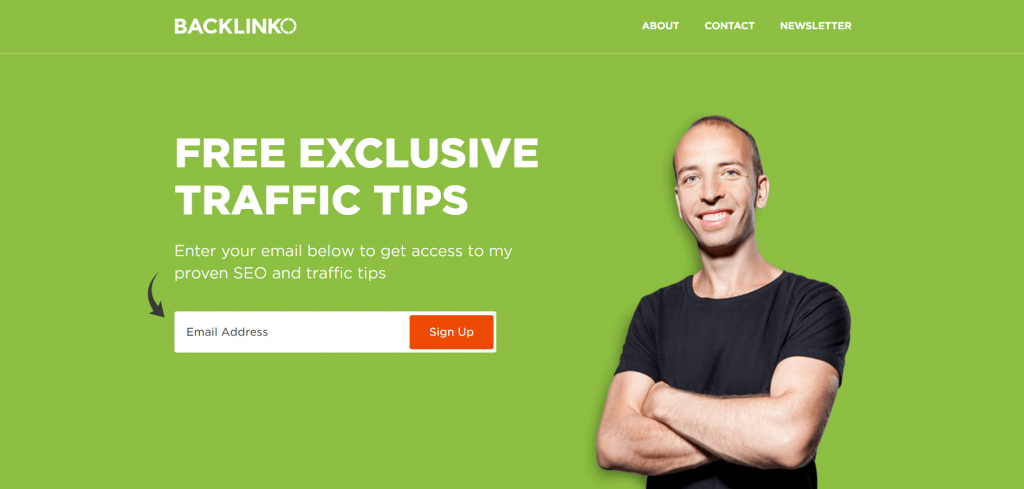
Thanks to his very informative content, regular site visitors are more likely to sign up for his (paid) training courses or contact him for consulting services.
2. Commitment: People want their beliefs to be consistent with their values.
The principle of commitment declares that humans have a deep need to be seen as consistent. As such, once we’ve publicly committed to something or someone, we’re much more likely to go through and deliver on that commitment (hence, consistency).
From a psychological perspective, this can be explained by the fact that people have aligned commitment with their self-image. Marketers, of course, have figured out how to use this second Cialdini principle to obtain greater conversion rates.
By getting site visitors to commit to something relatively small (and usually free), like a guide or whitepaper, they increase the likelihood that those site visitors will eventually see themselves as customers. That change in self-perception makes it easier to follow up with an offer for a paid product or service. (This is similar to “foot in the door” influencing tactics.)
Example of commitment
A striking and memorable example of this Cialdini principle in action can be found on the Copyblogger website. Copyblogger is the brainchild of Brian Clark. While it’s a popular blog, it’s really a software and training organization that sells content marketing software through Copyblogger Media.
Right on the homepage, you’ll notice a big headline urging you to grab the company’s free online marketing course. Just enter your email address:
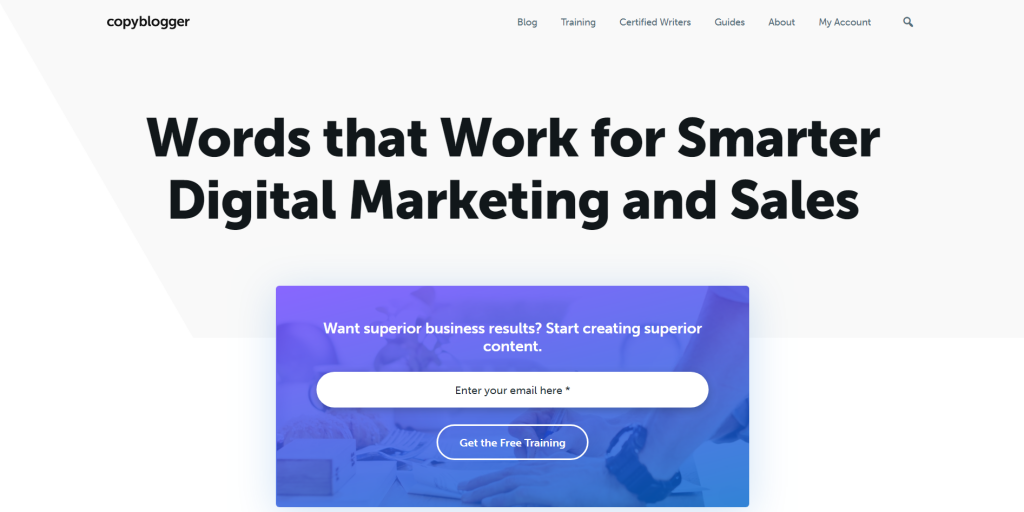
Clearly, this is a form of public commitment meant to get you to see yourself as a customer of the company. It’ll raise the chances that you’ll go on to purchase one of their services.
3. Social Proof: There’s nothing like feeling validated based on what others are doing.
When discussing influence and the psychology of persuasion, Cialdini defined social proof as people doing what they observe other people doing. It’s safety in numbers.
For instance, if our coworkers work late, we’re likelier to do the same. If a particular eatery is always full of people, we’re likelier to give that establishment a try.
We’re even more influenced by this principle if:
- We’re unsure of ourselves.
- The people we observe seem similar to us.
Social psychology is rife with experiments that illustrate this unavoidable, human phenomenon. A classic one is the 1960s elevator experiment run by Candid Camera, but based on the Asch conformity experiments.
Basically, whatever the majority of people do in an elevator, an individual who joins the group will copy.
For example, if the group looks to the back of the elevator, the individual will do the same, even if it looks funny. Most people assume that the group is, essentially, smarter than they are.
Example of social proof
One of the most powerful ways to use social proof is through so-called “wisdom-of-the-crowds.” Take Modcloth. Their product pages include not just reviews but also a counter that tallies the number of site visitors who have “hearted” a particular item:
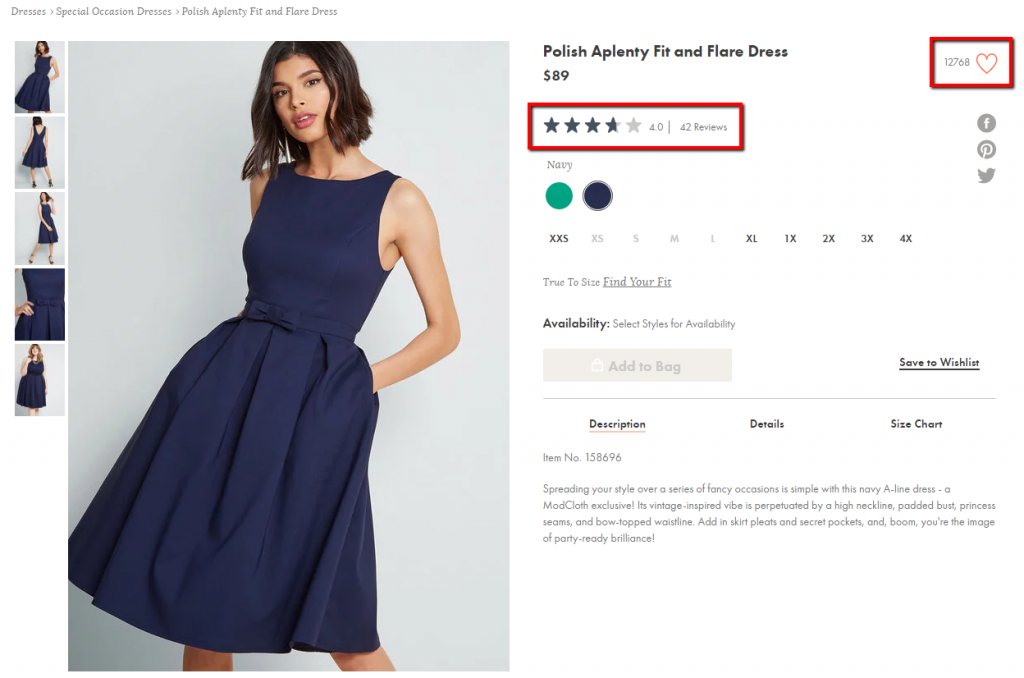
A previous tactic by the retailer allowed shoppers to vote on which styles they thought should be put into production. Such styles were awarded a “Be the Buyer” badge, which doubled the rate of conversion rate compared to items with no badge.
4. Authority: You will obey me!
Ever wonder why we a tendency to obey authority figures, even if they’re objectionable and ask others to commit objectionable acts? It’s human nature!
Accessories, such as job titles (e.g. Dr.) and uniforms, infuse an air of authority, making the average person more likely to accept what that person says. You can see this in commercials that, for example, use doctors to front their ad campaigns.
Example of authority
ShoeDazzle, which specializes in women’s shoes and accessories, relies on this principle. The company was co-founded by Kim Kardashian, who also serves as one of ShoeDazzle’s chief fashion stylists.
Even though the company was also founded by serial entrepreneur Brian S. Lee and attorney Robert Shapiro, that wasn’t going to help ShoeDazzle attract conversions. For the target demographic—young women obsessed with shoes—Lee and Shapiro aren’t authority figures.
That’s why the company brought in Kardashian as a co-founder. She’s an authority figure for young women shoppers.
5. Liking: The more you like someone, the more you’ll be persuaded by them.
What does it matter if you like someone? According to Influence by Robert Cialdini, it affects the chances of you being influenced by that individual. Welcome to Cialdini principle number five: liking. Liking is based on sharing something similar or a more superficial interest, like physical attractiveness.
This principle can be applied to conversions in the following way: A company that wants to boost conversion rates should create a great “About Us” page.
That sounds absurd, but it makes sense when you understand that a company’s “About Us” page is an opportunity to tell potential buyers about the similarities between its staff and site visitors. Since similarity is a key building block of liking, an effective “About Us” page is vital.
Let’s take a look at a case study.
Example of liking
This older, but still relevant case study centers on a company called PetRelocation. They help pet owners all over the world move their pets from country to country.
The company’s “About Us” page is full of staff bios, and every bio emphasizes not only the staff’s love of dogs, but also humanizes managers and employees by including hobbies and other personal details.

The effort increased the company’s likeability, which in turn boosted the conversion rate of site visitors.
Some businesses succeed with the liking principle on a grand scale. Richard Branson’s Virgin Group is liked by millions of loyal consumers who enjoy its finance services (Virgin Money) and airline (Virgin Atlantic), among other businesses.
6. Scarcity: When you believe something is in short supply…You want it more!
Scarcity is the perception that products are more attractive when their availability is limited.
We’re likelier to purchase something if we’re informed that it’s the “last one” or that a “special deal” will soon expire. In short, we hate to miss out, and that fear is a powerful motivator to encourage us to act quickly.
Examples of scarcity
Scarcity is one of the most popular Cialdini principles. Companies use it over and over again to boost conversions. This is a common tactic on travel booking sites:

Booking.com employs the scarcity principle in many ways:
- “You missed it! We reserved our last available room at this property.”
- “Our availability in Dublin is low on your dates – lock in a great price before it’s too late.”
- “Today 45% off.”
- “5 people are looking right now.”
- “In high demand – only 4 rooms left on our site!”
There’s also “time-limited scarcity.” Monetate has a great example of this principle. A blurb that reads, “Offer Ends in…, ” with a countdown resulted in an average order value (AOV) increase of 0.07%.
While a tiny increase, for this large online retailer, that small margin in AOV proved to be a “million-dollar campaign.”
But be careful: Never use fake scarcity—made-up claims of limited supplies or expiring discounts. Your site visitors will see right through you.
7. Unity: If you feel included, you’re more likely to participate.
The Unity principle is the shared identity that the influencer shares with the influencee.
According to Cialdini, the Unity principle moves beyond surface level similarities (which can still be influential, but under the Liking principle). Instead, he says, “It’s about shared identities.”
It’s about the categories that individuals use to define themselves and their groups, such as race, ethnicity, nationality, and family, as well as political and religious affiliations.
A key characteristic of these categories is that their members tend to feel at one with, merged with, the others. They are the categories in which the conduct one member influences the self-esteem of other members. Simply put, we is the shared me.
Dr. Robert Cialdini
In a way, the Unity principle boils down to the third step on Maslow’s hierarchy of needs: the need to belong.
The Unity principle and the Granfalloon technique
Have you ever been at a party or conference and met someone that went to the same university as you did? Or maybe you two previously worked at the same company. You felt an instant connection, didn’t you?
The Unity Principle that Cialdini talks about is very similar to a persuasion principle called The Granfalloon Technique. The name comes from a Kurt Vonnegut novel, Cat’s Cradle. The definition (in Vonnegut’s words) is when someone calls upon “a proud and meaningless association of human beings.”
Now, “meaningless association,” is of course ambiguous (and in Vonnegut’s intention, probably a little cynical). But in Cat’s Cradle, Vonnegut cited examples such as, “the Communist Party, the Daughters of the American Revolution, the General Electric Company—and any nation, anytime, anywhere,”—and of course the Hoosiers, to which he and the main character belonged.
“My God,” she said, “are you a Hoosier?”
Kurt Vonnegut, Cat’s Cradle
I admitted I was.
“I’m a Hoosier, too,” she crowed. “Nobody has to be ashamed of being a Hoosier.”
“I’m not,” I said. “I never knew anybody who was.”
The Granfalloon Technique in action
Politicians use the Granfalloon Technique all the time to try to appeal to voter segments. For instance, according to The Practice of Social Influence in Multiple Cultures, this is how Clinton won over “Reagan Democrats,” and other subgroups. He played the saxophone, joked about marijuana, appeared on MTV, had an all-Southern ticket (Gore was from Tennessee), and reveled in his image as Bubba.
So, a Granfalloon is simply an in-group vs. out-group trick where you attempt to invoke a group’s traits, rituals, characteristics in attempt to form an immediate bond. These can be genuine and authentic, or they can be a bit cringy (as they often are in politics).
Once you notice the technique, you see it everywhere, with politicians (and any leader) across the board, whether you like them or not. They talk about loving Harley Davidson motorcycles, or eating fast food, or whatever their voter segment likes doing.
This “minimal group paradigm,” where we form groups on the basis of completely inconsequential criteria, isn’t always inauthentic or manipulative. In reality, identifying in terms of a group helps us make sense of the world and build up self-esteem and pride.
The Reverse Granfalloon
I don’t care to belong to any club that would have me as a member.
Groucho Marx
There’s another side of this technique, at times a very dark side of it, called the reverse Granfalloon. Instead of appealing to a sense of group cohesion, you position you and your group against another one, real or imagined.
This, of course, has played out disastrously many, many times in history.
A micro-example of this would be in a cult like the Children of God, where members are taught to hate their parents. Another example is that Chinese prison warders taught American POWs that the capitalist system is corrupt. (Both examples come from Age of Propaganda, by the way. Get the book!)
However, the “out-group” appeal can always be benevolent and fun. Take, for example, Chubbies shorts and their antagonism towards exclusive fashion labels.
By positioning themselves against these ideals, they form their own group cohesion and identity (people that wear Chubbies love fun, the weekend, and short and funny shorts).
How Can You Use the Unity Principle for Optimization?
Many of the examples in Pre-Suasion are relatively limited to real world contexts, and some are pretty controlled experiments. But if we expand the definition past groups like family and religion (activities like CrossFit are arguably just as strongly bonded anyway), then there are many real and powerful use cases for Unity in optimization. Here are some ideas:
- Use specific and unique jargon: Crossfit centers around working out in the same place at the same time), but invokes tremendous pride and self-esteem. They have their own language and practices. They have a WOD (workout of the day), AMRAP (as many reps as possible), T2B (toes to bar), and many more terms.
- Convey exclusivity: When I think of “the few, the proud,” I of course think of the US Marines and what a cohesive identity and pride they have. Luxury brands attempt to convey an “elite club” mystique as well (a much different kind, of course).
- Define the out-group: Position yourself as “not like those other guys.” For instance, Planet Fitness takes a hard stance against loud, aggressive, bodybuilder types by installing “lunk alarms” that go off if you drop your weights or make too much noise. This can fall flat because you alienate more people than you bring together (like Ted Cruz’s denunciation of “New York Values” and the ensuing backlash). T-Mobile used product differentiation wonderfully by positioning themselves as the “uncarrier”: they removed contracts and sold themselves as not as evil as the other carriers.
- Invoke family ties: For many people, family is their strongest tie. Roger Dooley from Neuroscience Marketing summed up an example from Pre-Suasion, where Cialdini asked students and their parents to fill out questionnaires. Student participation was high, but parent participation was low, below 20%. However, when he tweaked the assignment to give students an extra point on a test if their parents completed the survey, he increased the parental response rate to 97%.
- Use family-related language: Sometimes, it’s hard to invoke family directly. You can still use family-related language. Here’s Roger Dooley again explaining an example from Pre-Suasion: “In a particularly important letter to shareholders regarding succession plans, Buffett wrote, ‘I will tell you what I would say to my family today if they asked me about Berkshire’s future.’ With that language, Cialdini says, Buffett was highly convincing because he said he was advising readers in the same way he would advise a family member. Coupled with Buffett’s perceived trustworthiness, the content of the letter was highly convincing. The investment community reacted in a very positive way, praising it as Buffett’s best shareholder letter ever. Simply laying out the succession plan in factual language would have been less effective.
- Invoke location-based ties: Sharing a geographic location can invoke a sense of community. I’d be lying if I said I don’t have a soft-spot for people from Wisconsin (or that graduated from UW). A few days ago, my artfully persuasive colleague Ben Labay snuck in a Granfalloon into this introductory email: “Yo Juan, Ben here, nice to meet. You’re in San Antonio? That’s my hometown.” Not bad, Ben.
- Co-create or share an experience: It starts with a simple question: “Can I get your advice?” In the book, Cialdini gave the example of a restaurant known as Splash!. They showed consumers the concept and then asked for either “advice,” “opinions,” or “expectations.” They were then asked how likely they were to visit the restaurant. Those asked for “advice” were much likelier to answer that they’d go to the restaurant. According to Dooley, “They were helping create the new concept, not just commenting on it. When you ask for consumer input, frame it as asking for their advice to the brand, not for opinions about or expectations for the brand. The differential phrasing might seem minor, but it is critical to achieving the sense of unity.
Conclusion: the 7 principles of persuasion in action
These Principles of Influence have been used for decades by businesses and marketers to get you, the consumer, to part with your hard-earned money. Since the explosion of ecommerce, internet marketers have adopted Cialdini’s seven principles, too.
Pay close attention to these principles. Learn what they’re about and how to apply them to your website. Don’t be afraid to give your potential customers a free sample or two, and definitely tell them if your products won’t be available for much longer or at certain prices.
Dr. Robert Cialdini
Used properly, you’ll enjoy a boost in your conversions. Act now—before it’s too late!
Working on something related to this? Post a comment in the CXL community!
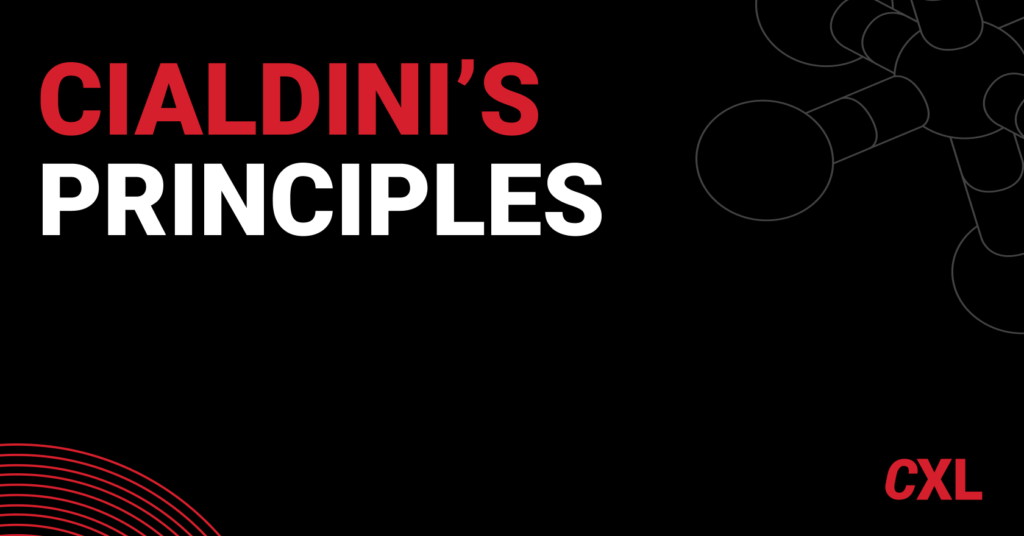

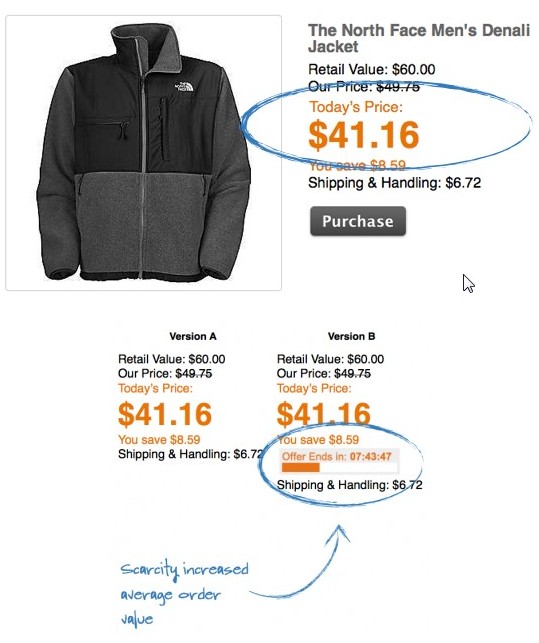
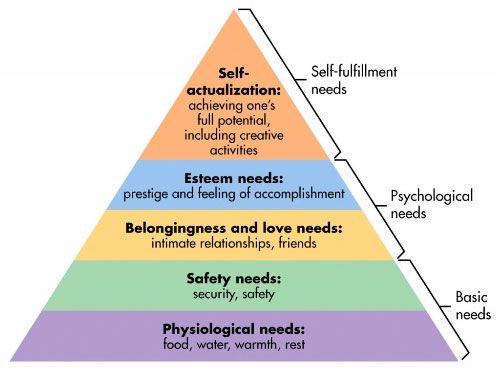

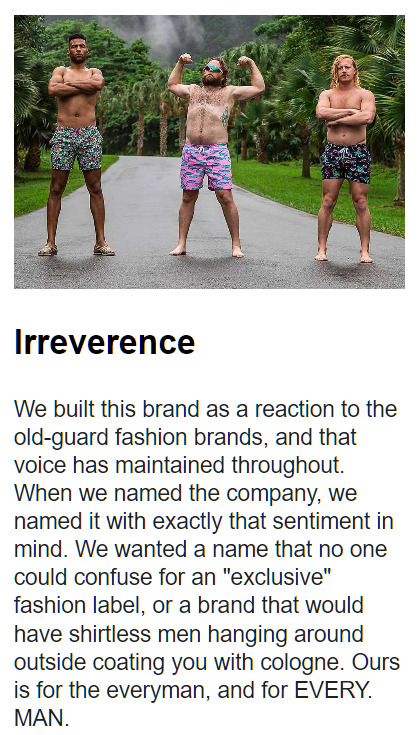



If you change a paragraph or two, this post could just as easily be about dating. Excellent info.
Thanks William
Great post Peep! I really enjoyed the article. An undeniable example of social proof is the success of Facebook. The entire user experience and massive growth is heavily based upon the principle of social proof. Even their new “Facebook Sponsored Stories” feature. The stories are only shared with friends you know and it appears at the top of all your friends feeds. When friends see the recommendation coming from another friend they are more likely to read it, comment, and share it. This is social proof in action!
Thnx again, keep it coming!
Thanks Sal!
Indeed. And wall posts with tons of likes and comments attract more likes and comments.. and so on :)
Peep – always enjoy reading your articles. Keep the good stuff coming ;)
Appreciate it!
Hi Peep,
This is my first time on your site — joined your email list as well.
Fantastic extrapolation of Cialdini’s marketing classic.
Thanks!
Lawrence
Welcome Lawrence!
Amazing posts peep,just like always. There is a lot to say about how to apply these principles to increase conversions.
Adding to the “liking principle”:
We know from neuroscience that whenever we are faced with a new situation/event or meeting someone for the first time our reptilian brain is alarmed to evaluate whether its a threatening event/person or friendly (in our case, landing on a new website). By quickly building rapport and showing empathy (through our value proposition/headline, our lead paragraph) we can open a window to start persuading the decision maker (the old brain) and start getting them to like us. It usually translates in low bounce rates on a page for new visitors.
Looking forward for future posts peep.
Make your day great
yassin
Good insight. Definitely if we like the person selling us something, it’ll lower our guard and we’ll be more receptive to the message.
Great Post as always Peep, I think this is the only blog where I check back every other day to see if there is something new, as I believe you don’t send out emails for each post you write. I get your email a week combining couple of posts and I find that different and a new approach to email marketing.
I think social proof is most important, as it’s very comfortable to buy something you know other are buying. I think urban outfitters are doing an excellent job with this, they have a review tab with reviewers photos wearing the same product.
Thanks for sharing..
Thanks! Indeed, I send newsletters only once a week.
Excellent post, once again, Peep! This is a classic book by Cialdini that’s indeed still highly applicable to modern businesses. I’ve zoomed in at one of these aspects (social proof) in one of my presentations on Slideshare called “Capturing Social Proof Through Online WOMM”
http://www.slideshare.net/bubobox/capturing-social-proof-through-wordofmouth-marketing
Good stuff. I love Cialdini.
something great to learn here. These are called timeless business principles. They will always be effective. I will surely share this. I like the idea of RECIPROCITY. It only thought as not to be selfish marketers.
Great post Peep
Always find myself coming back here :-)
For small businesses, one-person set-ups, or those without the authority/confidence yet in their sector – persuasion selling strategies online can be a daunting intangible – systems that are hard to set up and equally hard to measure.
In that context, have you ever thought of releasing a step-by-step course of simple techniques businesses could use to increase their website conversions – especially now traffic is so precious with all the Google changes – just a thought?
Good stuff as always and your book is excellent.
Cheers!
Loz
Thanks Loz!
Indeed, a course is in the making;)
Would love to see examples of how to use scarcity when you’re only selling one product, such as an eBook. Great post and thank you.
You could
* Sell it only until date X
* Give limited bonuses to Y buyers
* Give extras to people that buy before Z date
.. and so on :)
Great book and some useful tips in the article :-) I’d also recommend reading Kahneman’s “Thinking fast and slow”, lots of insights into the way we think and act to be found there .. and used to improve our marketing efforts :-)
Dear Peep Laja, thank you for your great article. We are proud publishers of Czech translation of Cialdini’s “Influence” book (http://melvil.cz/kniha-zbrane-vlivu) and would like to ask you for permission for translating and publishing your post in Czech language – on our blog. Is it possible? Thanks!
Peep,
What a fantastic article. I just recently came across Cialdini’s book at the library, read it, and was blown away. It really changed my thinking about many situations, including conversion rates. I actually wrote myself a “6 Principles” assessment where I judged my website based on these principles! I’ve also been a follower of your blog for the last few months, so this post really clicked for me.
I think it’s worth going into any situation (selling, dating, job interview, friendly debate) keeping the six principles of persuasion in mind. I have seen positive results in my own interactions with people. Thanks for an excellent post!
A great blog with some great advice. Nice one
This guy have indirectly taught me more about marketing than I ever thought possible. If you want to get a serious education on the power of persuasion listen to his audio and buy his book YES! The case studies are unreal. All can be applied to your business for awesome results.
GREAT post. Huge Cialdini fan.
Respectful